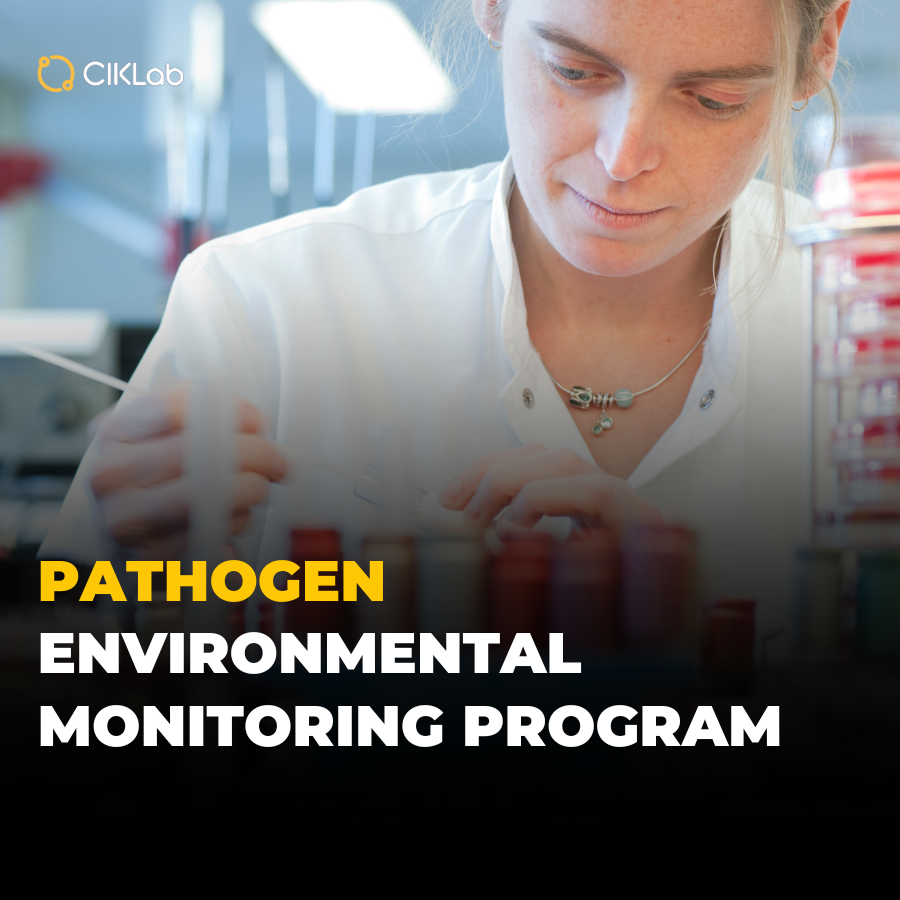The Certificate of Analysis (CoA) is a central document for many industries, including the dietary supplement, cosmetics, chemistry, and pharmacy sectors.

Summary
1) What is a Certificate of Analysis (CoA)?
What is the purpose of a Certificate of Analysis (CoA)?
What's the difference between a Certificate of Analysis (CoA) and a Certificate of Conformity (CoC)?
What are the objectives of a Certificate of Analysis?
2) What should be included in a Certificate of Analysis?
Which elements are essential on a Certificate of Analysis?
3) What challenges arise when editing Certificates of Analysis ?
4) Why is it necessary to use software dedicated to analyses?
What is a certificate of Analysis ?
A Certificate of Analysis (CoA) is a contractual document most often issued by a quality control department. It serves to confirm with evidence (analysis results) that a product is tested according to certain standards and methods, and that test results are available. It compares the analysis results with pre-established specifications that can be internal, regulatory, and/or negotiated between the issuing company and a buyer. Sometimes independent laboratories issue CoAs for the export of certain products.
What is the purpose of a Certificate of Analysis (CoA)?
The CoA certifies a product's compliance in terms of quality, performance, and safety. In industries such as ingredients, chemicals, and agri-food, CoAs are usually issued in the context of B2B transactions between sellers and buyers. They complement the technical data sheet and allow, before concluding a purchase contract, for the evaluation of the criteria and parameters that will lead both parties to agree on the purchased products and the batches received.
💡 It's no longer uncommon for some manufacturers to also offer CoAs in B2C to demonstrate to consumers that the products undergo rigorous controls that attest to their quality.
CoAs are generated for each production batch and are one of the fundamental elements of a product's traceability !
Certificate of Analysis (CoA) Vs Certificate of Conformity (CoC): What's the difference ?
There is sometimes some confusion between Certificates of Analysis and Certificates of Conformity. Of course, each industry has its standards and practices, but in theory:
- A Certificate of Analysis (CoA) contains only the analysis results performed on a specific batch.
- A Certificate of Conformity (CoC) is a declaration of the company's commitment to ensuring the product's compliance with regulations or a set of criteria, without necessarily providing test results from a specific batch.
In some industries, Certificates of Analysis can be hybrids, meaning they contain both analysis results and regulatory compliance commitments, or even analytical commitments (such as periodic analyses for Pesticides, Heavy Metals, etc.).
What are the objectives of a Certificate of Analysis?
Building Trust with Analysis Results: The primary objective of a Certificate of Analysis is to provide accurate, reliable, and verifiable results by citing the methods, techniques, and standards used to obtain them. This ensures the accuracy of the information provided to clients and stakeholders.
More importantly: results obtained from validated methods such as ISO, NF, DIN, etc., facilitate international trade by clearly establishing benchmarks to evaluate and "agree upon" a result!
Intended Use: A Certificate of Analysis precisely provides analysis results. For instance, when purchasing a raw material, it allows buyers/manufacturers to formulate other products based on the results of that raw material. For example, one could rely on the protein content, fat content, active substance, etc., displayed on the CoA.
Guarantee of Quality and Safety: A CoA, with its analytical results, demonstrates that the products meet the established specifications, whether they relate to regulations, safety, or product performance.
Regulatory Compliance: A valid CoA verifies and proves the product's compliance with regulations, thereby minimizing legal and health risks, while also showcasing the interpretation one might have of the regulations. For instance, one cannot consider compliance with a regulation as an analysis! However, the required elements of that same regulation should be detailed on the certificate.
The mycotoxins to be tested for milk differ from those for coffee, and so do their specifications!
Traceability: The CoA contains information about the manufactured batch and the tests conducted, allowing for the tracing of its origin, production, and distribution in case of an issue.
Continuous Improvement: Data gathered in the CoAs contributes to trend analysis. They assist manufacturers and/or buyers in evaluating and monitoring trends and bring continuous improvements to their products and processes.
What should be included in a Certificate of Analysis?
A Certificate of Analysis is a documented response to the product specification sheet. This means that the elements to display, all the tests to be performed, as well as the specifications are described, validated, and recorded before the issuance of a certificate.
The Certificate of Analysis is nothing more than the proof of what you specify !
What elements are essential on a Certificate of Analysis ?
- Product Identification: The product's name and description, including its reference.
- Manufacturer/Supplier Information: The name, address, and contact details of the product's manufacturer or supplier.
- Product Characteristics: Specific data on the product's physical, chemical, or biological characteristics.
- Batch Number: The product's batch or serial number, essential for tracking and traceability.
- Production/Expiration Date: The manufacturing date of the product and its expiration date, if applicable.
- Analysis Methods: A list of the methods and procedures used to perform analyses on the product.
- Analysis Results: The results of tests and analyses performed on the product; this might include both quantitative and qualitative results.
- Specifications: The specifications the product must meet, with acceptable limits for each analyzed parameter.
- References and Standards: The standards, analysis methods, and references used to assess the product's quality. This can include industry standards, monographs, etc.
- Issue Date: The date the Certificate of Analysis was issued.
- Signature and Authorization: The signature or approval of a person responsible for issuing the certificate is essential.
- Comments or Remarks: Any relevant comment related to the analysis results or product quality.
- Compliance: A statement indicating whether the product complies with the established specifications.
👉 Discover how to create automatic CoAs with CIKlab !
%20-%20CIKLab%20Food%20Safety%20Testing%20Software%20.png?width=641&height=907&name=Certificat%20of%20analysis%20(CoA)%20-%20CIKLab%20Food%20Safety%20Testing%20Software%20.png)
Use Case: The Certificate of Analysis for an ingredient.
The case of ingredient Certificate of Analysis is quite intriguing. There's a vast variety of ingredients used in the food industry and dietary supplements. By nature, they are very diverse (mixtures, natural substances, plants, extracts, etc.), and their chemical, physical, and microbiological properties sometimes have to be defined and measured based on how they will be used and what will be guaranteed on the label of the finished products. This essentially means potentially several different certificates for the same batch, depending on its use!
Each ingredient adheres to rules regarding its "nature" (purity, concentration, composition) and very specific regulations. The certificates can contain a vast amount of analyses and information to incorporate.
Download our guide to see how to create an analysis certificate for an ingredient !
What challenges are there in editing Certificates of Analysis ?
Editing Certificates of Analysis can be a complex and time-consuming process for many Quality Control departments. The main challenges lie in the variety of platforms used to manage quality control and analysis tracking.
Product specifications can be described and recorded on a network in PDF format, analysis results (both external and internal) on another platform like Excel, for example, and batch manufacturing information in another place like an ERP or a "Paper" batch/production record.
Editing CoAs is time-consuming, complex, and let's admit it: anxiety-inducing, because the information is "scattered" across different locations and platforms. You have to search, compile, verify, and record all the data to be able to accurately generate the certificates. Some Quality Managers use templates in Excel or Word to create CoAs, which then need to be signed, converted to PDF, and filed.
It's not uncommon for these steps to take at least half an hour per certificate !
Why use dedicated analysis software for Certificates of Analysis ?
Using dedicated control analysis software is inseparable from a certificates of analysis generator in order to save time and eliminate the risk of errors. In the case of ingredients, for instance, the number of analyses to manage on a CoA is significant. Utilizing a generator without "connecting" it to your analysis management system would mean starting over.
Your software should first allow you to centralize all your types of analyses, based on a test catalog principle:
- Analysis Name
- Method / Standard
- Technique
- Unit
Utilizing these "analysis building blocks" allows you to create your control plans in advance, based on frequencies and expected specifications. The system should provide the capability to display certain controls and exclude others, as well as add supplementary information based on the products.
With each new batch, the analyses and all specifications are automatically retrieved, providing a clear outline of the required analyses and controls. Once analysis results are entered, making determinations on each result and the batch as a whole becomes very straightforward!
👉 Discover how to create automatic CoAs with CIKlab !
Certificates of analysis become automated !
With all batch and analysis data available and pre-configured on a single interface, the generation becomes automatic. With just one click, you can easily produce a signed and dated analysis certificate in PDF format.
- Everything is pre-configured, data collection is automatic, and there are no more input errors.
- The elements to display are predefined, eliminating the risk of using the wrong CoA template based on clients or regulations.
- The CoAs are digitally dated and signed according to user rights, removing authorization issues.
- The CoAs are stored and organized directly in a password-protected software solution. Security, accessibility, and certificate integrity concerns are eradicated.







